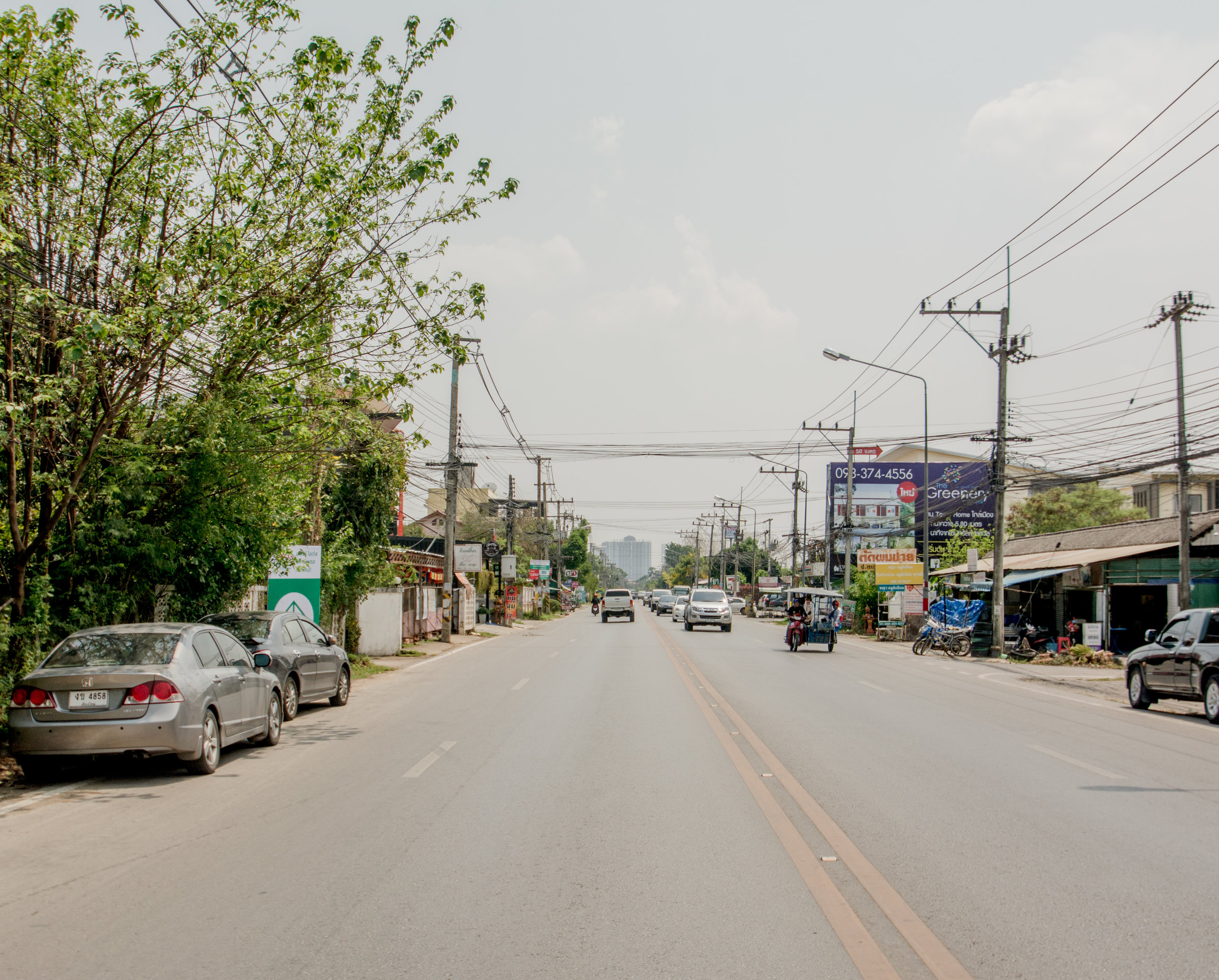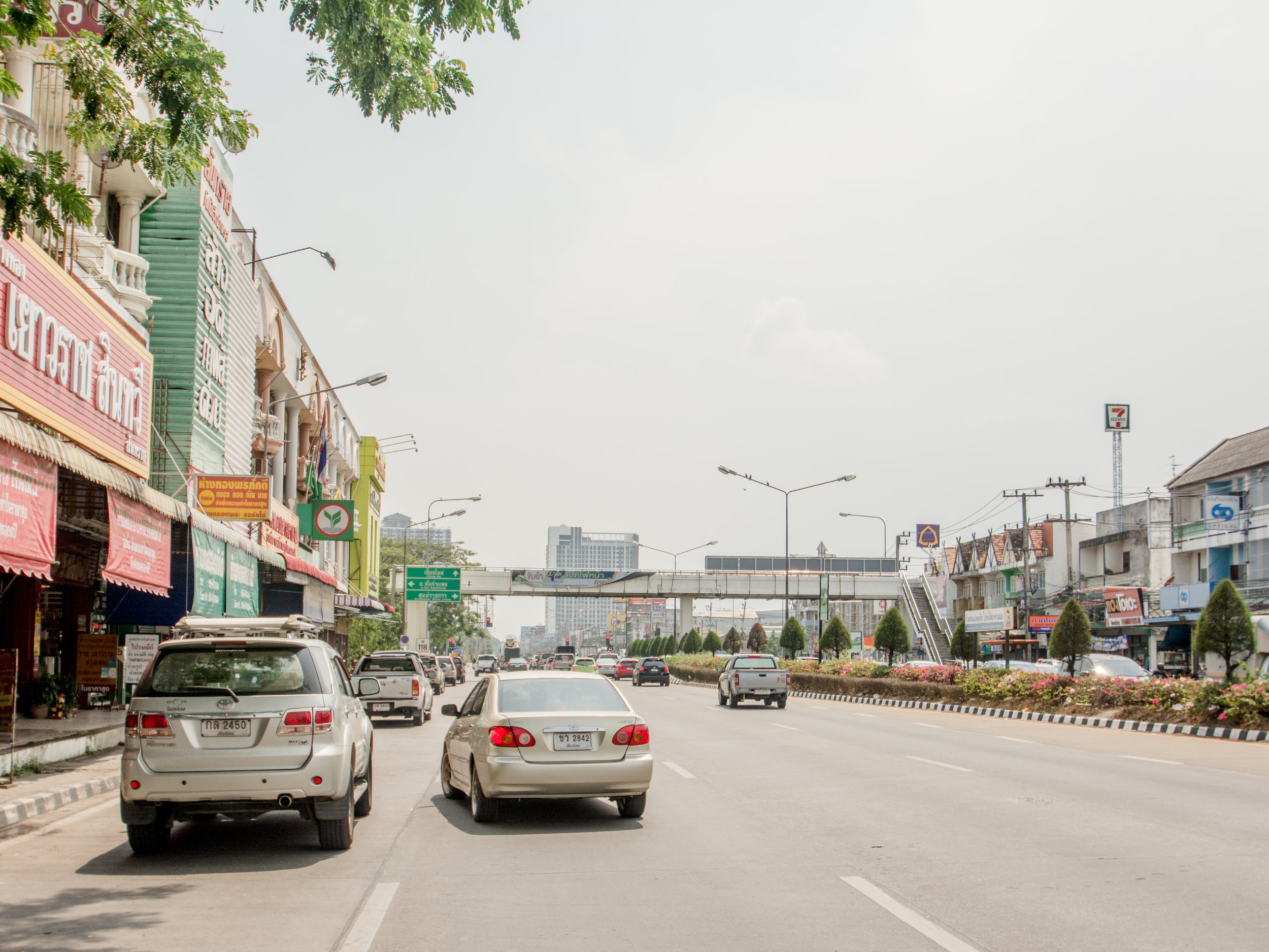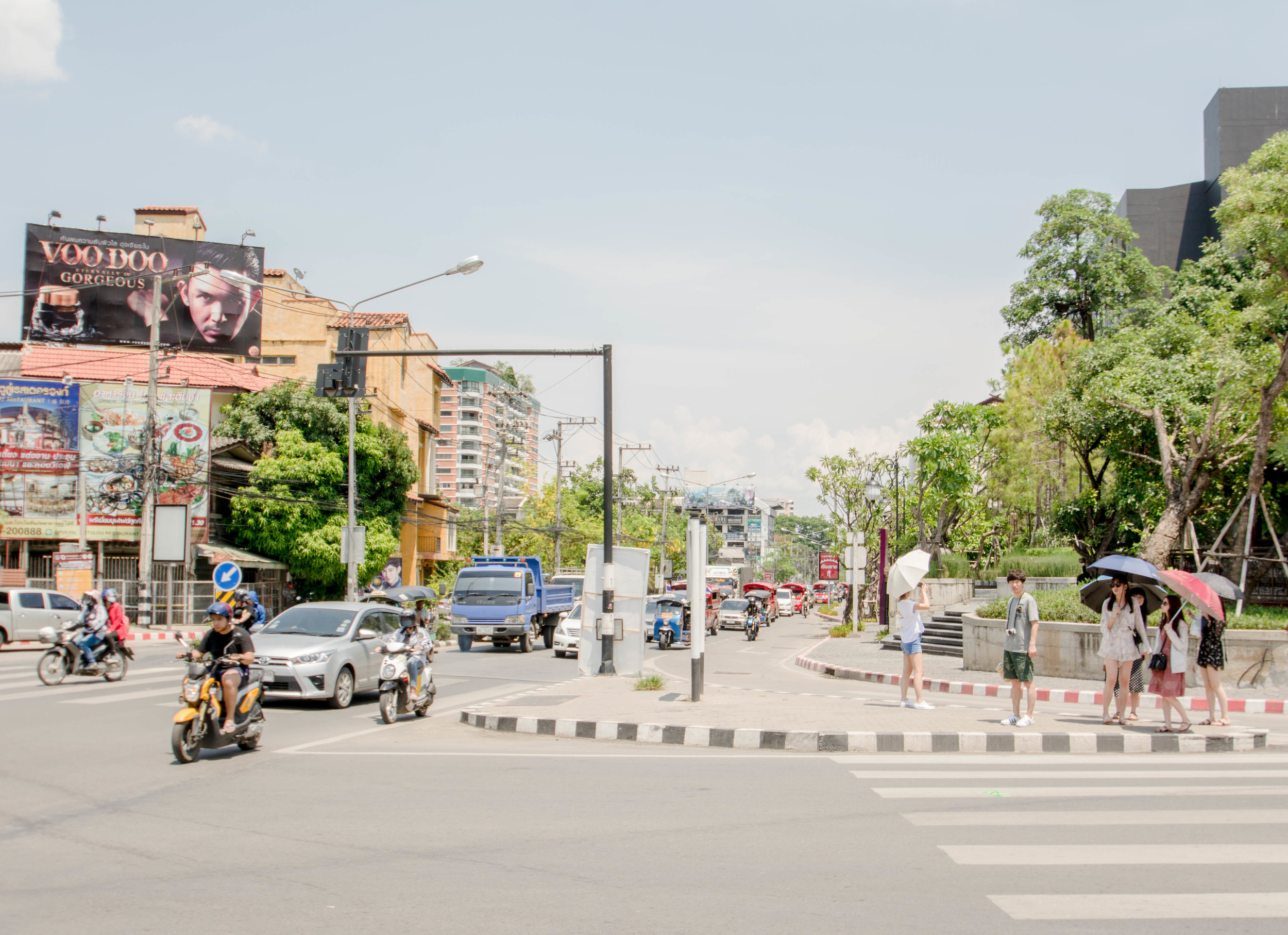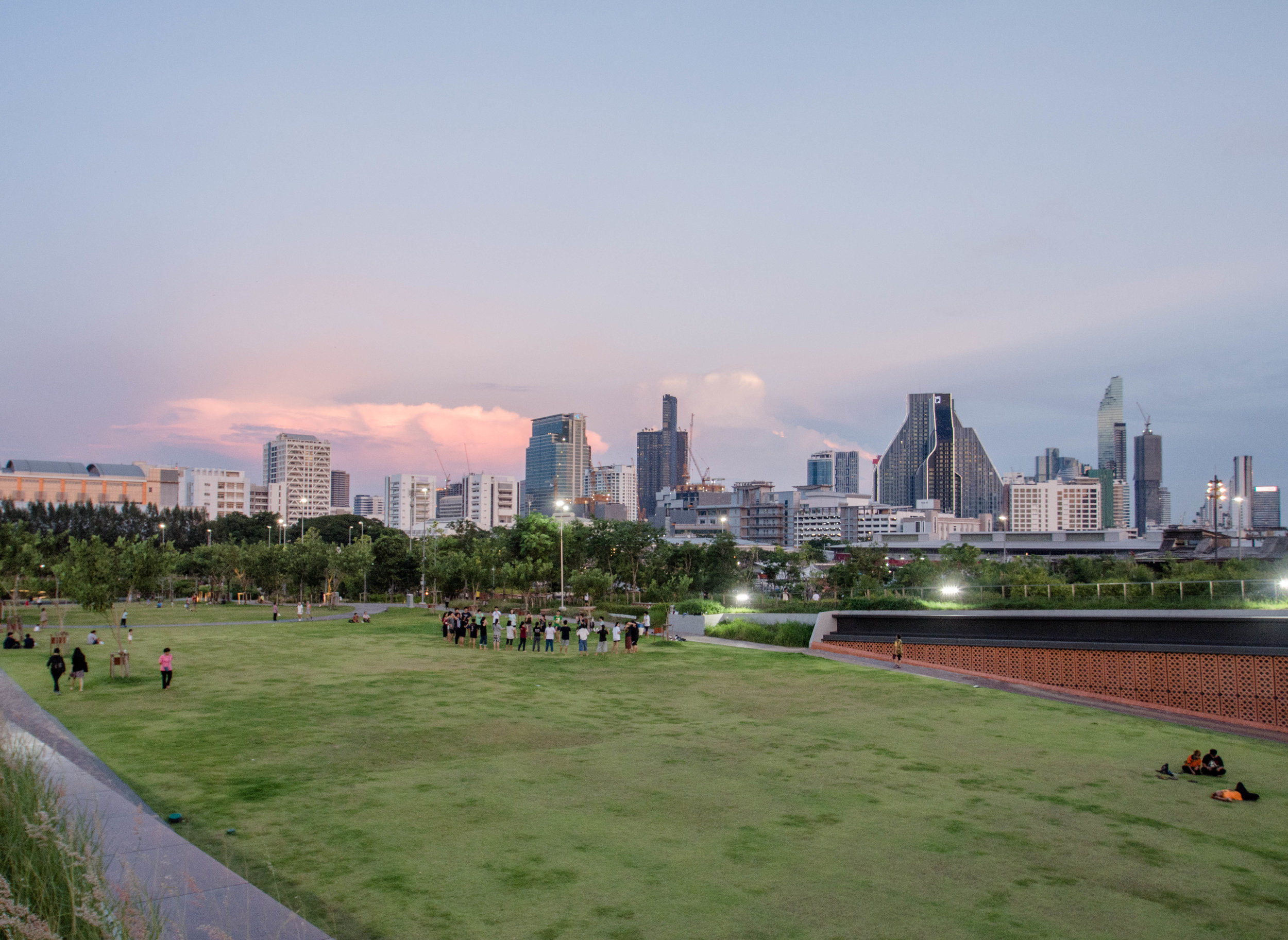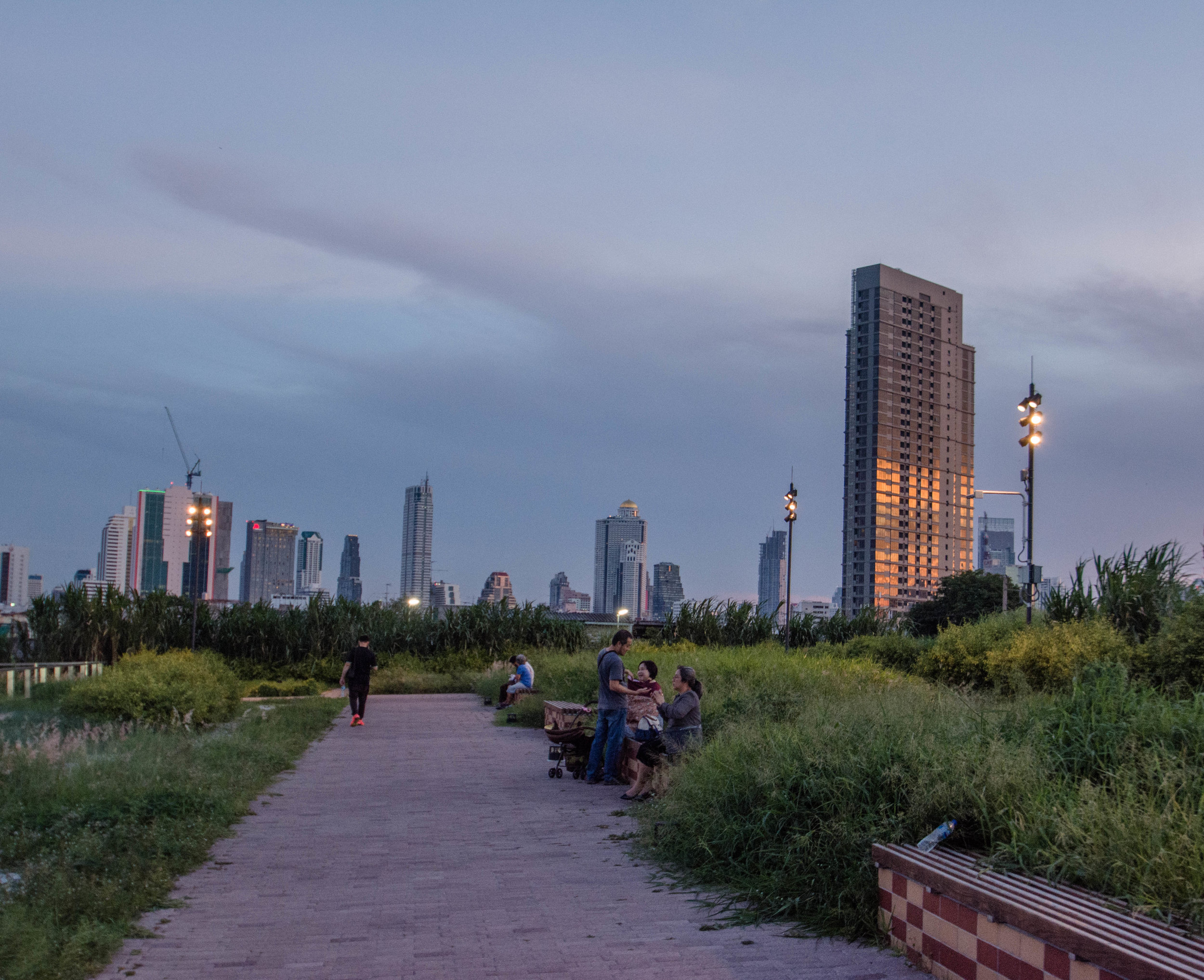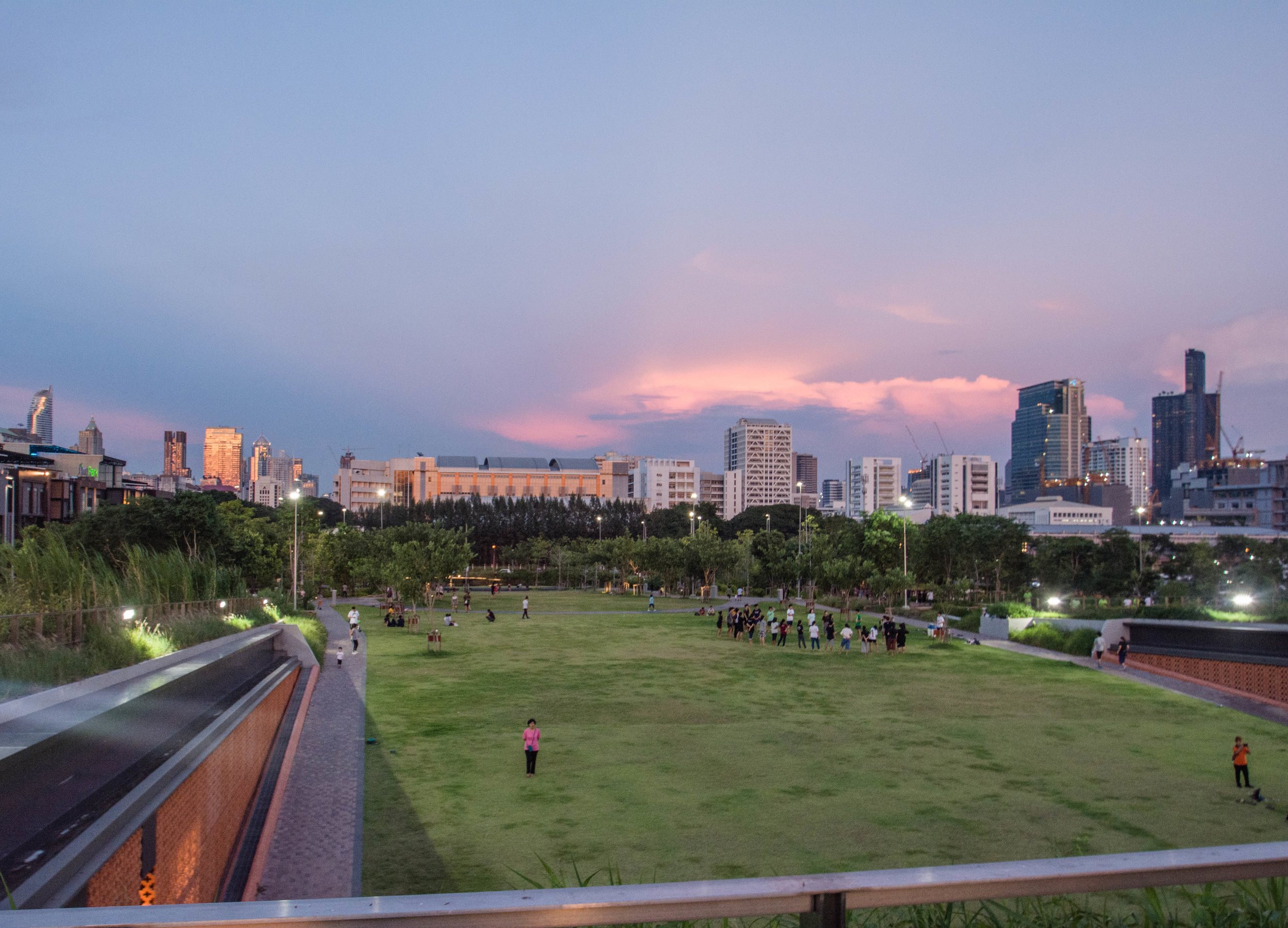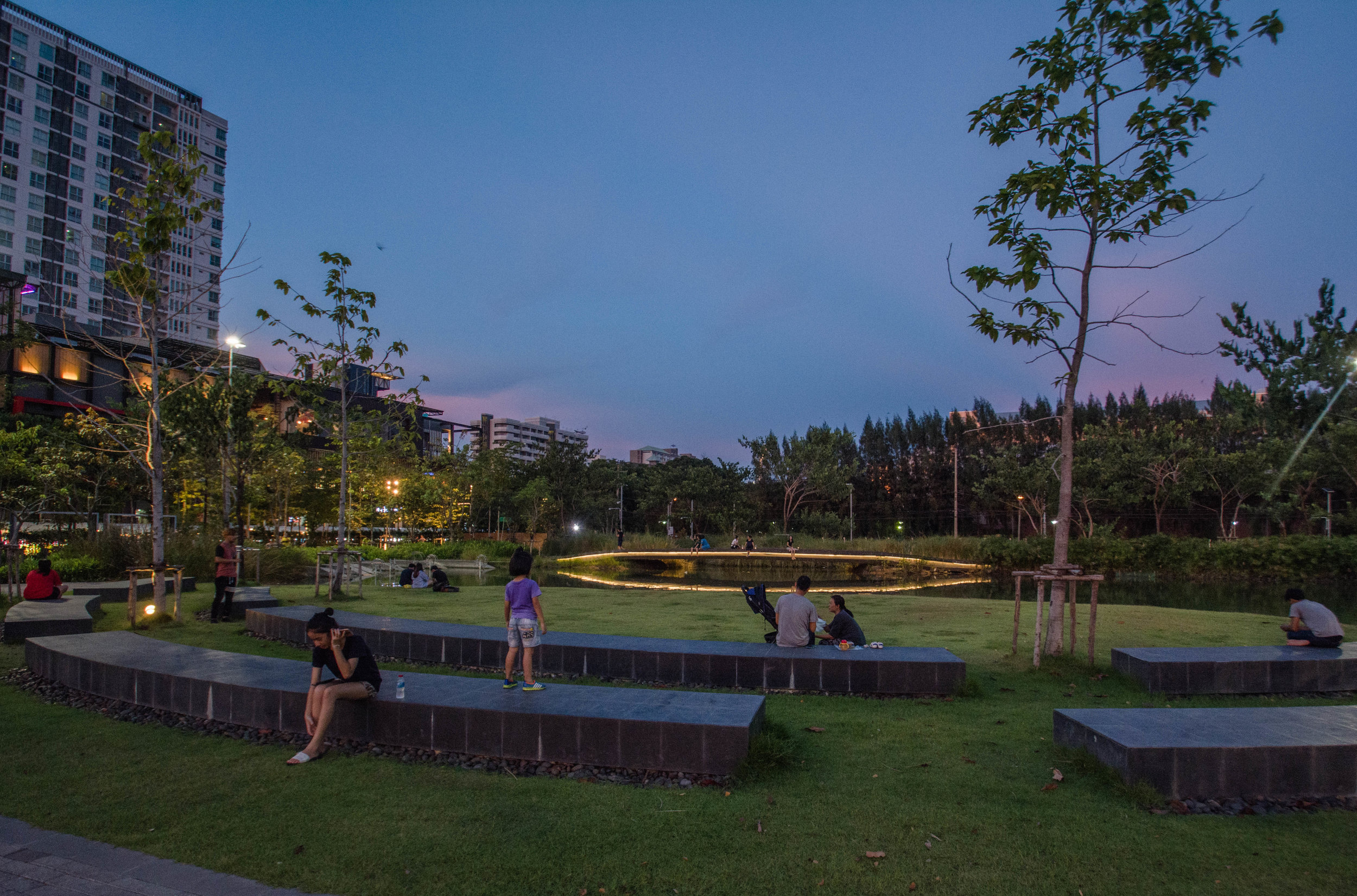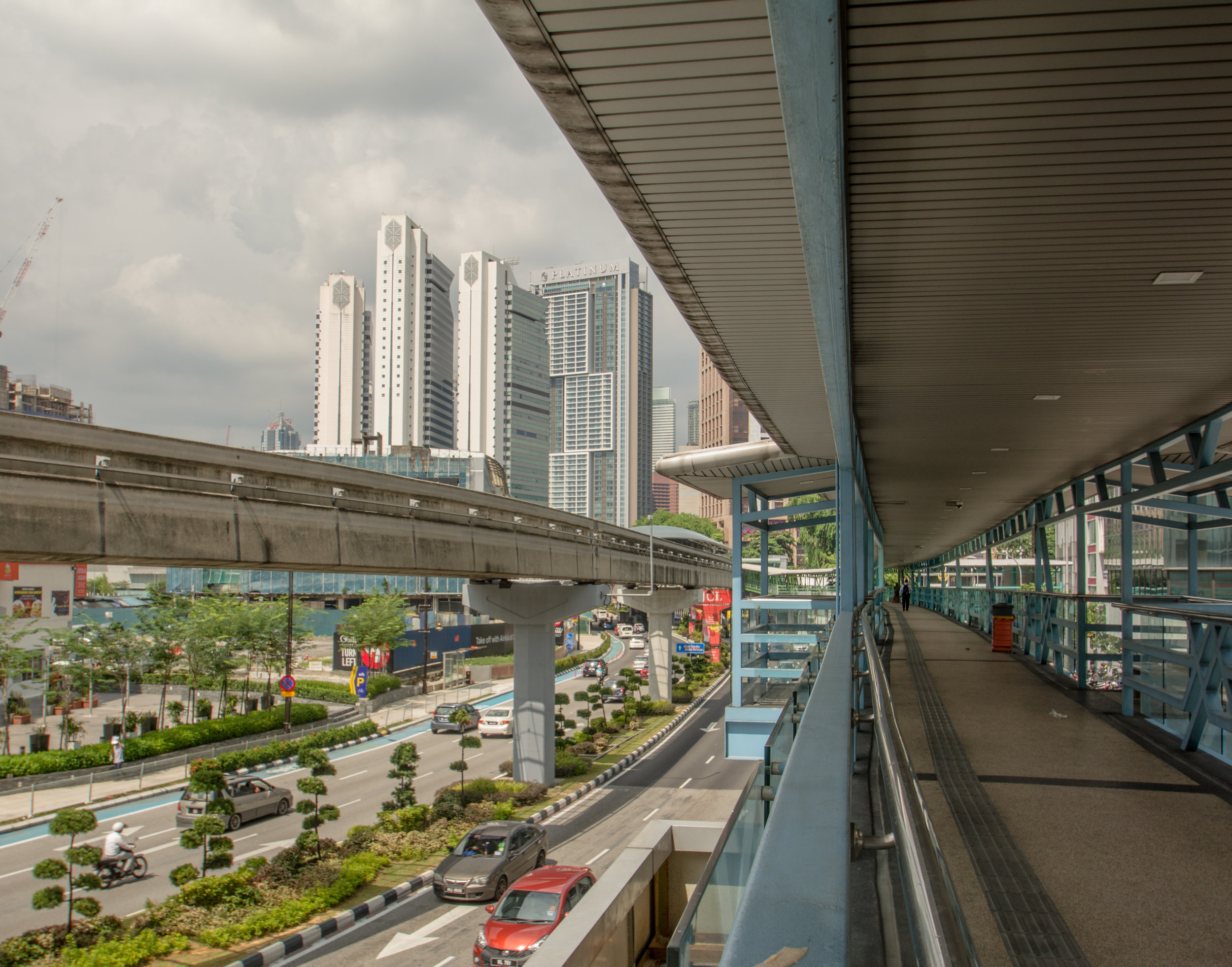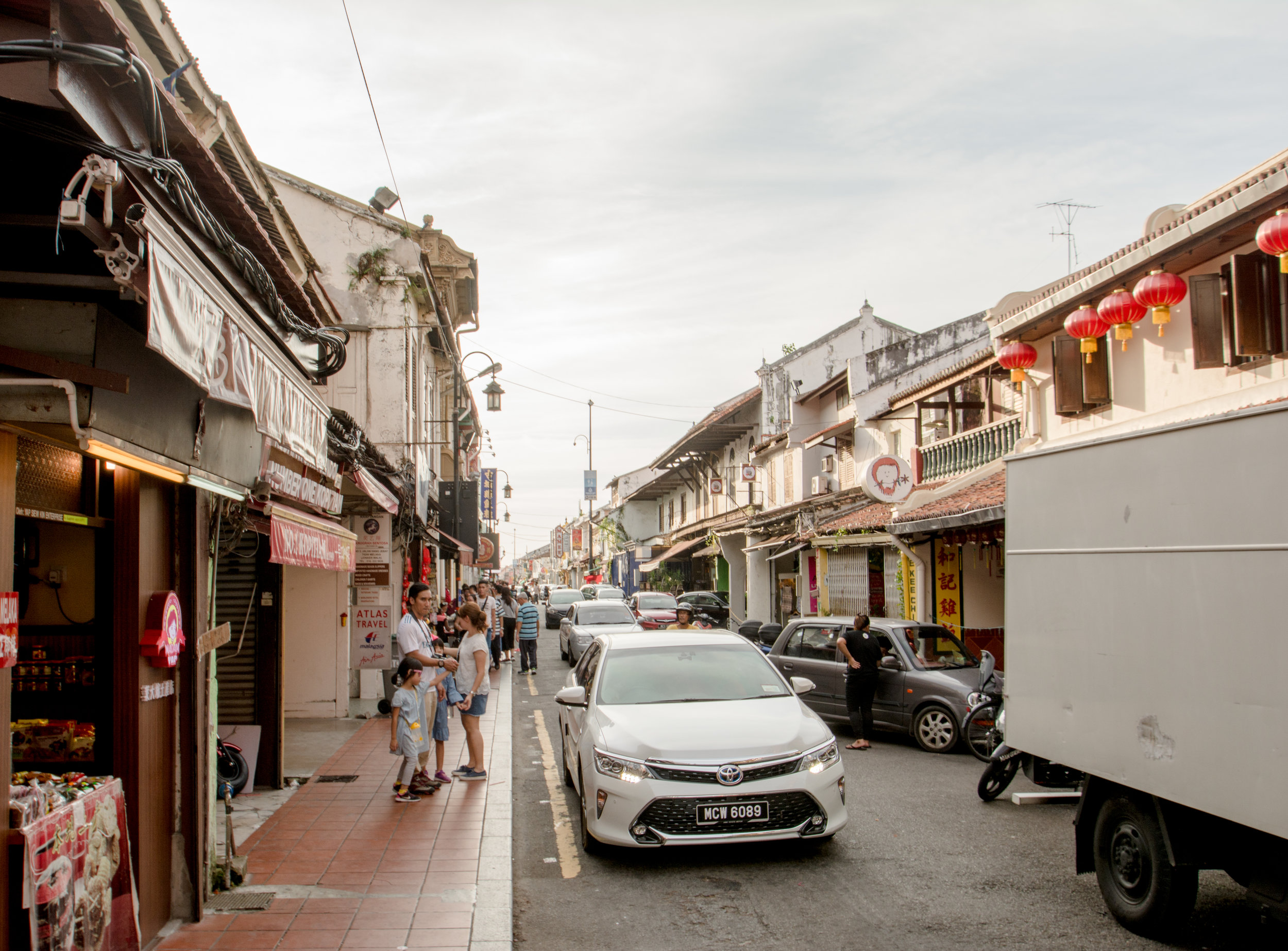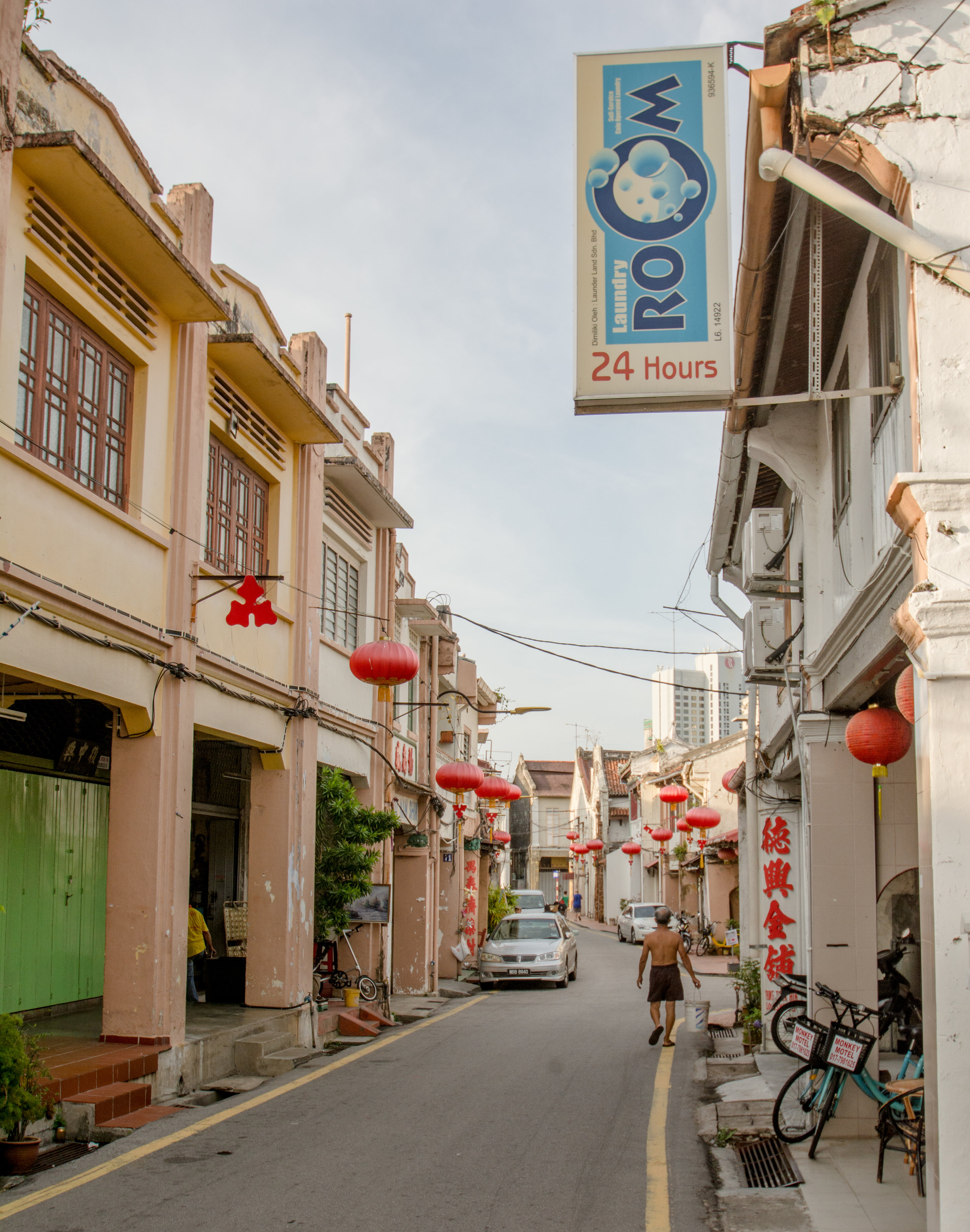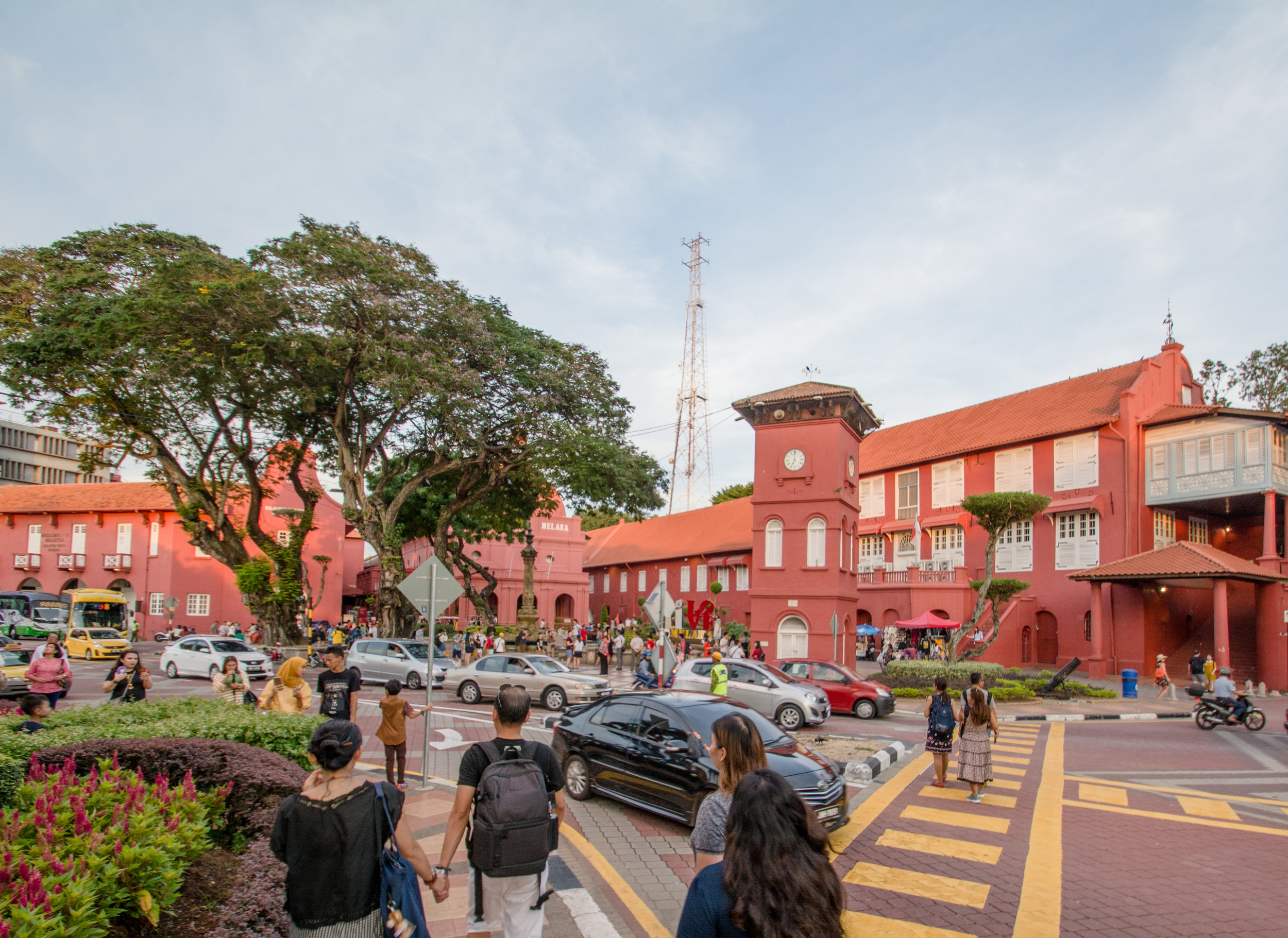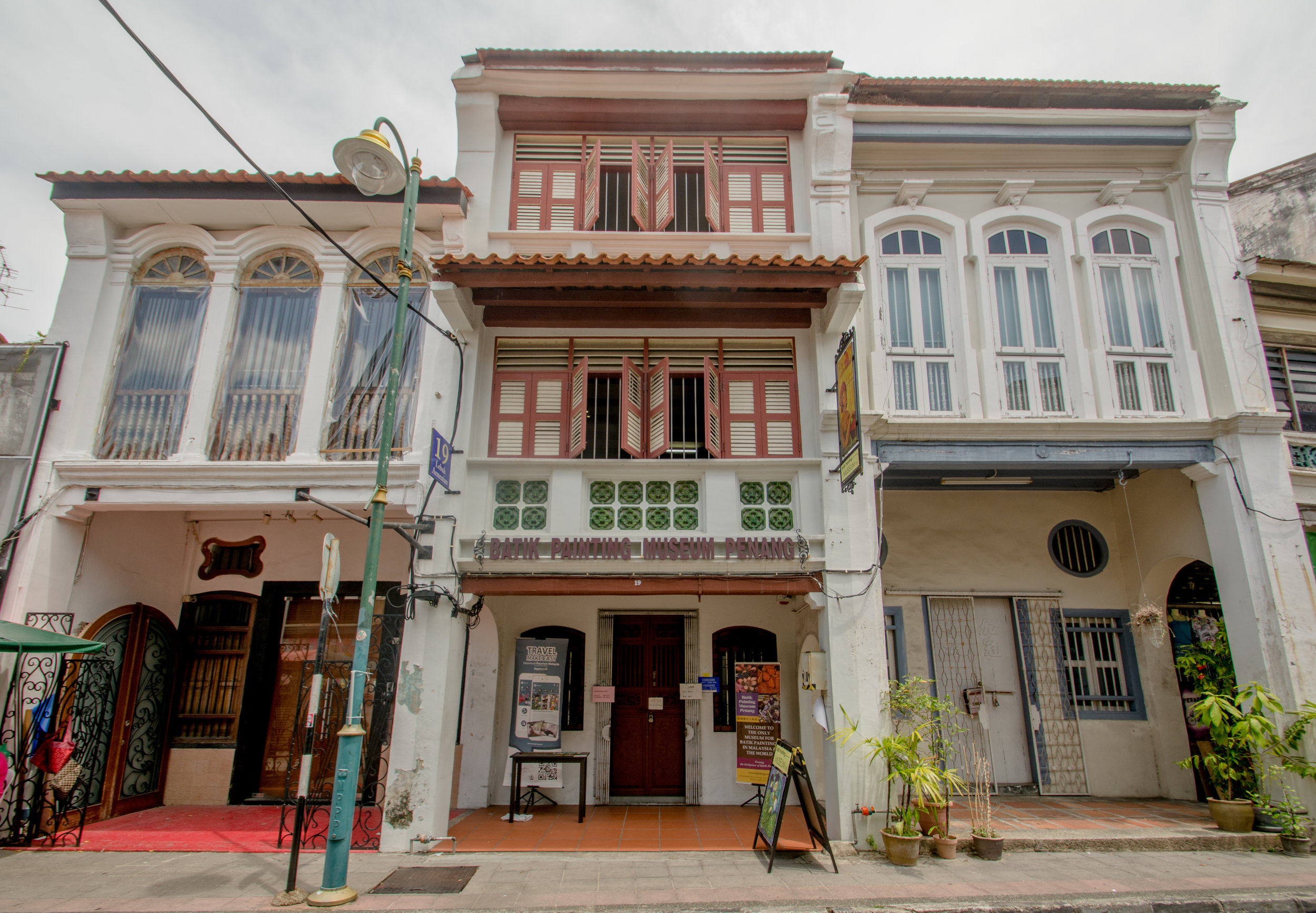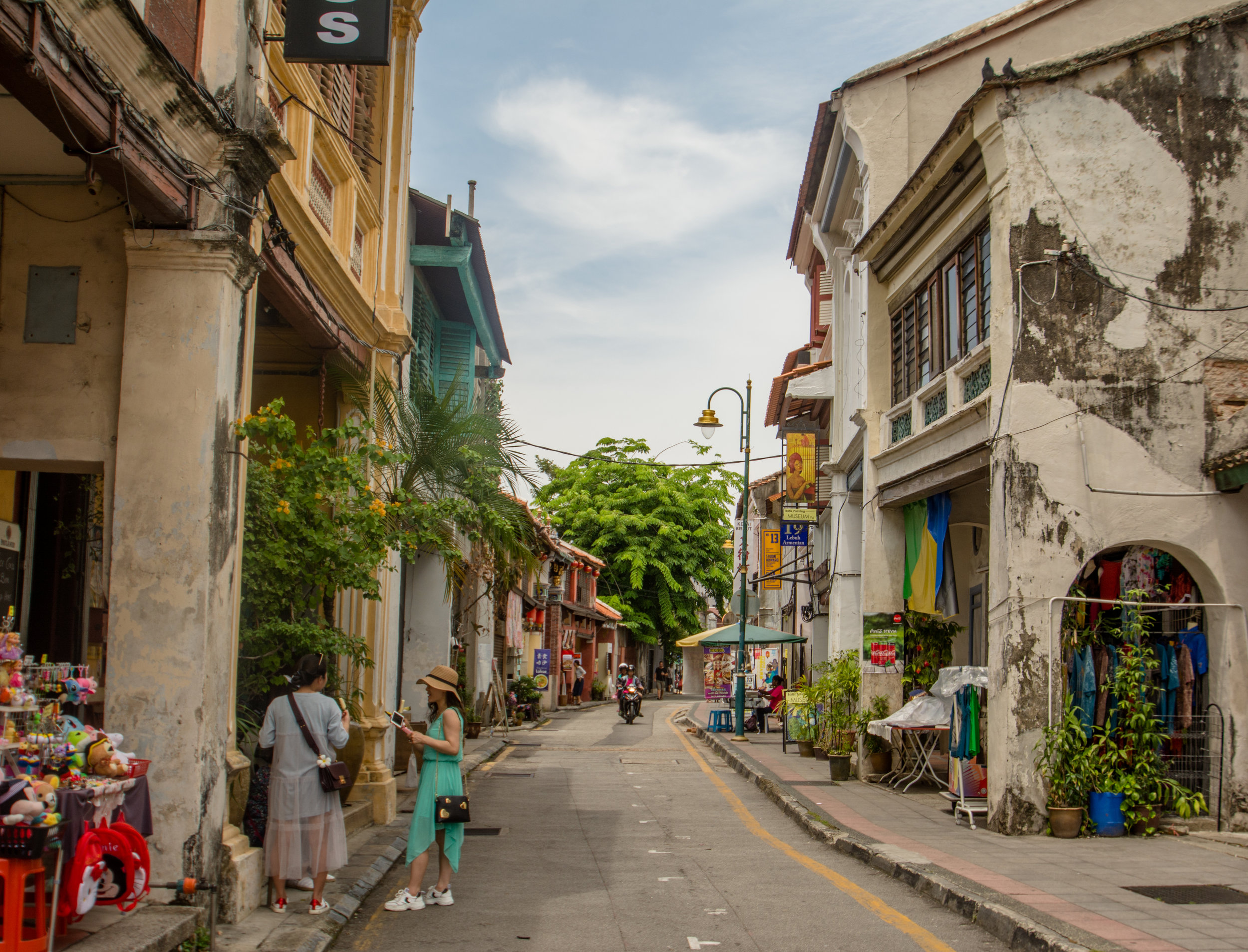Do I Even Like Cities?
written by courtney banker / photography by andrew lesmes
After spending three months traveling through Southeast Asia for The Homage Project, I find myself wondering: Do I even like cities? This thought didn’t cross my mind after our stay in Vietnam, when I was absolutely infatuated with “walking towns” and streets chock full of cheap ice cream—enough rose coloring to make me forget about Hanoi’s horrid air quality (so bad that the US Embassy sent us a health warning) and the traffic jams that even scooters can’t snake their way out of. But as soon as we left the motorbike-dominated realm of Vietnam, I felt a strong yearning to be back in the chaos of Vietnam’s streets.
Chiang Mai, our first stop in northern Thailand, felt oppressively hot and surprisingly devoid of street food. The heat should have been anticipated, but the lack of density and building height, coupled with the much less frequent occurrence of food stores and watering holes, made the swelter much more noticeable. With few hawkers, crowded sidewalks, and street cafes to distract me, all I could think about was the searing sun.
Our next stop in Bangkok felt less hot (even though Chiang Mai is touted as “cooler”), but again I found myself yearning for a narrow, crowded, chaotic, and interesting Vietnamese street. Instead, we found ourselves trudging through one too many pedestrian purgatories: eight-lane roads where people were all but forced to use elevated walkways and bridges to get around; eerily empty expanses of sidewalk and road that ironically make up part of Bangkok’s city center; and intersections so large and convoluted that even Google Maps couldn’t figure out which exit to take.
Upon arriving to Chiang Mai, Thailand, we immediately noticed a much different streetscape than what we found in many Vietnamese cities. Large, imposing thoroughfares and intersections are standard—even in close proximity to the old town—and pedestrian infrastructure often leaves much to be desired in the mind-numbing heat and humidity.
I wanted to celebrate the varied transit options available in Bangkok, but didn’t feel so enthusiastic after waiting for a public bus for one hour, only to give up and take a taxi in desperation. Rail, always the more beloved public transit option of the two, wasn’t too enticing either because of its relatively high price tag. Since when should an inner-city train trip cost the same as my dinner? An average trip on Bangkok’s Sky Train cost $1 to $1.50, whereas a ride on New York City’s subway cost $2.75. Considering many Bangkok locals spend only $1.50 on a meal, the fare—and the rail network’s limited service area—likely sways would-be riders toward other means of getting around.
My frustration with Bangkok reached its peak while processing the city’s shopping mall obsession. Malls are so popular and prevalent that they often are the recommended place for culinary endeavors in Bangkok. Indeed, we ventured to three in one day, naively thinking a highly-regarded “food court” wasn’t also a place of commercialism run amok in direct competition with active, linger-worthy streets.
To be fair, Bangkok wasn’t entirely disappointing. We stumbled upon the recently-opened Chulalongkorn University’s Centenary Park which—even without realizing its smart-city undertones and unique role as a greenspace developed by a public university, meant to serve as a cornerstone of a neighborhood redevelopment project and general community space—enamored us from first glance. An exceptional display of landscape architecture, the re-purposed rectangular plot boasts jogging paths, a virtual reality exhibit, and ample spaces for unbridled play. One end sits on an artificial elevation, making for unbeatable skyline views and an unexpected incline in a relatively flat city. The greenery grows with a sense of reckless abandon, making it feel like a wild oasis amid a cement jungle. Throughout the park, exercisers intermix with mothers watching their toddlers teeter on the soft grass, students lounging before class, couples enjoying the sunset, and tourists observing in awe.
Chualongkorn University's "Centenary Park" is both an impressive example of modern landscape design and a testament to the benefits of interesting, accessible green space in metropolises like Bangkok. The park's artificial hill provides joggers with an incline and sunset watchers with a view of the skyline; ample seating can be found throughout; and the central lawn provides space for group activities and sports.
The “redevelopment project” surrounding the park was a little less awe-inspiring. A reminder that neighborhoods don’t transform over night, and that redevelopment is rarely a tension-free endeavor, the still-unoccupied new construction overlooked a bustling block of working-class homes and businesses—now vulnerable just because of their location. But as children and their parents delighted in an entire wall of incognito slides on the park's northwestern edge, it was easy to remember that nevertheless, parks and public spaces are imperative to the task of breeding compassion and respect for cities and the people in them.
We left Bangkok for George Town, a UNESCO World Heritage Site on the Malaysian island of Penang. George Town, as its name would suggest, endured British (and for a brief stint, Japanese) rule while serving as a melting pot for many ethnically Chinese, Indian, and Malay peoples. Its old town is replete with British colonial architecture; Buddhist, Muslim, and Hindu temples; a Little India; famous street art; and, allegedly, Southeast Asia’s best street food, garnering much-deserved tourist traffic. Unlike Vietnam’s Hoi An, this UNESCO World Heritage Site feels less like a cheaper version of Disney’s EPCOT, and more like a functioning town center where locals live, worship, work, beg, eat, and socialize—because it is. As exciting as the old town was, leaving the human-scale of the UNESCO-protected zone for the car-oriented, high-rise dominated landscape everywhere else heightened the disappointment and discomfort experienced in the latter.
Nothing, however, compared to the urban experience of Kuala Lumpur. Until 2004, Malaysia’s capital boasted the tallest skyscrapers in the world. Though now down to 16th place, the Petronas Towers and their altitude encapsulate the city’s addiction to height. Skyscrapers and high rises are so ubiquitous that it seemed the entire horizon was one big “sky rise.” And yet, with all of the density provided by residences stacked on top of each other all the way to the clouds, Kuala Lumpur is a city covered by highways and cars. Some say that roads are one thing Kuala Lumpur does well, and they would be correct. Roads and a network of elevated pedestrian walkways lead the city’s horizontal landscape, whereas streets lack the activity or appeal to beckon the masses down from their towers. Urbanism complaints aside, the covered walkways proved to be welcomed salvation from a flood-inducing thunderstorm, and when air-conditioned (yes, some were), from the heat of the tropics.
Despite Kuala Lumpur's many dizzying skyscrapers—some of the tallest in the world—the city's transportation habits seem curiously at odds with the perceived high density of its built environment. The streetscape is dominated by high-capacity, limited access roads and pedestrian walkways of an impressive scale; rail and bus transit operate throughout Kuala Lumpur, but the amount of roadways and traffic would suggest an overwhelming preference for the private automobile.
We are now back in a small-scale city enjoying the pedestrian-oriented legacy of former colonial settlements. Melaka, situated on the southwest coast of Malaysia and another UNESCO World Heritage Site, served as a crucial port in historic trade routes. Its strategic location and potential for riches attracted the domination of the Portuguese, Dutch, and British, while still supporting a mesmerizing blend of ethnically Chinese, Indian, and Malay peoples. Much like in George Town, the UNESCO protected zone features a colonial era old town where the human-scale streets and buildings point to a pre-motorization design approach.
Two blocks out of the protected zone, however, puts people back into pedestrian and cyclist purgatory where car is king. But even the historic center isn’t immune to automobiles. Unlike Hoi An, which heavily restricts motorbike access and rarely receives cars in its old town (cars, relative to Malaysia and Thailand, are overall rare in Vietnam), Melaka has not had much success limiting motorized traffic in its old town—despite financial interests to do so. The narrow sidewalks of the city center offer hardly enough space for people to walk side by side, and leave the thousands of daily visitors to compete with cars, presenting safety concerns and detracting from its World Heritage-acclaimed aesthetic. Only on weekend nights, when the night market takes over the historic center’s main thoroughfare, can visitors enjoy a car-free downtown Melaka.
Melaka and Penang share charming and one-of-a-kind urbanism becoming of their UNESCO status. However, unlike World Heritage Towns like Hoi An, Vietnam, motorized traffic is allowed every day, year-round (except for the Jonker Walk night market on weekends). Cars compete with pedestrians for the already-limited walking space, creating a hectic experience in an otherwise tranquil setting.
As quaint as Melaka and George Town are, and as important as larger cities like Bangkok and Kuala Lumpur are, I am not satisfied. In three months, we’ve seen big cities, small cities, tourism-dependent cities, old cities, new cities, motorbike-dominated cities, car-dominated cities, UNESCO-protected cities, and cities that have endured bombs and war and economic woes—but still haven’t found a city that wholeheartedly embraces The Homage Project ideals. Where are the cities that look to their World Heritage-worthy sites not as an outlier, but as a bastion of good urban design? Where are the cities that don’t paint bike lanes for the disingenuous purpose of having a “bike lane,” only to let cars and other obstacles permanently obstruct the tiny space allocated for cyclists? Where are the cities that don’t punish people incapable of climbing stairs by not allowing them to cross a road without using a pedestrian overpass? Where are the cities that celebrate streets where people want to stay and linger? Where are the cities that see striving towards modernism as equal to striving for lively, safe, sustainable, and healthy cities, as Jan Gehl promotes?
Trudging through filthy streets, seeing overcrowded living conditions, and coughing through motorbike exhaust plumes during the past three months has given me more empathy for suburban die-hards who dream of big, air-conditioned houses with attached garages and backyards. Not all cities—and especially not every part of every city—are great. It would be idealist to think otherwise. But it is not idealist or unrealistic to think that cities can prioritize active transportation, the human-scale, and public space. Because those—the places where families, disabled people, the elderly, teenagers, cyclists, broke college grads, and pets can reign—are the pockets of cities that I love.


